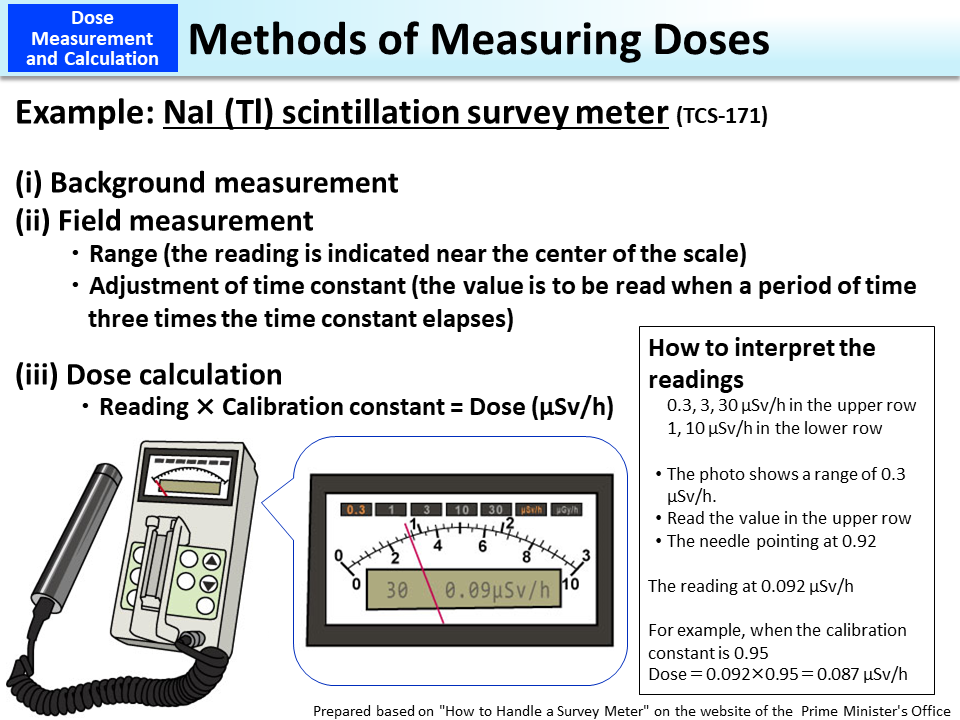Methods of Measuring Doses
A method of measuring γ-ray ambient dose rate using a NaI scintillation survey meter is shown as an example of a method of measuring doses.
Before measurement, the device is checked for soundness (appearance, power supply, high voltage) and then background is measured (set a range at 0.3µSv/h and a time constant at 30 sec). Normally, the background value is around 0.1µSv/h.
Field measurements are normally carried out at a height of about 1 m above the ground. The counting range is adjusted so that the meter readings come near the center of the scale. The time constant is adjusted according to the purpose of measurement. For measurements in a rough, wide range or of high doses, the time constant is lowered. To make accurate measurements or to measure low doses, the time constant is increased. After a period of time about three times the time constant has elapsed since the start of a field measurement, the average of the readings is read (for example, the value is read after the lapse of 90 seconds when the time constant is 30 sec.).
The dose equivalent rate (µSv/h) can be obtained by multiplying the reading by the calibration constant that is preset for each measurement condition.
When using measuring instruments, precautions should be taken such as checking whether they operate properly before use, handling them carefully because they are precision instruments, covering measuring instruments with polyethylene sheets during rain or when making measurements in highly contaminated areas, etc.
- Included in this reference material on March 31, 2017
- Updated on March 31, 2019

